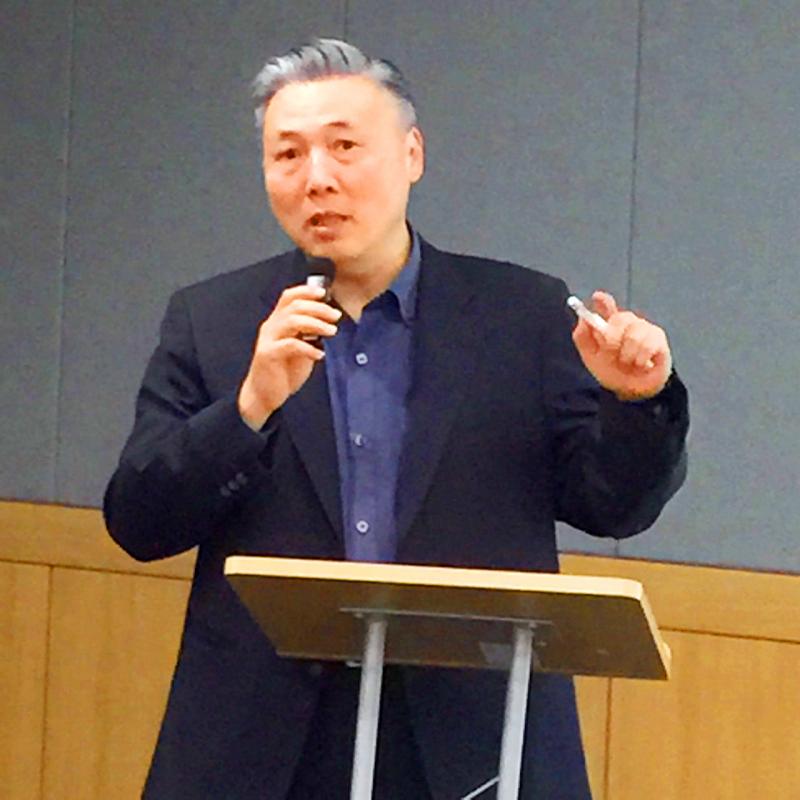ASE Technology Holding Co (ASE, 日月光投控), the world’s biggest chip assembler and tester, yesterday issued an optimistic outlook in expectation that its core business revenue would grow more than 20 percent this year on stronger customer demand and limited capacity.
Earlier this year, ASE projected that revenue from its chip assembly and testing services would this year be double the estimated revenue growth of the semiconductor industry.
“We are seeing stronger assembly and testing manufacturing demand than our previous target,” ASE chief operating officer Tien Wu (吳田玉) told an online investors’ conference. “Our sentiment is better than our previous guidance. The momentum will last into next year.”

Photo: Grace Hung, Taipei Times
Customer demand indicates that there would be better than seasonal demand in the first quarter next year, Wu said.
That might create an unusual situation in which the first quarter could be better than the fourth, he added.
ASE expects that supply and demand balance would be reached in 2023, given long manufacturing equipment delivery time stretching to about one year, Wu said.
“Next year, we still need to be smart and efficient in managing the bottleneck,” he added.
In response to investors’ concern about double booking, Wu said inventory correction might occur, but it should be temporary and limited to certain regions.
It would have a limited impact on ASE’s overall business momentum, he added.
Many of its customers had signed long-term service agreements and intend to extend such contracts to 2023, the company said, adding that long-term supply agreements were announced in April as customers sought to secure capacity amid a supply crunch.
In this quarter, ASE expects assembly and testing manufacturing shipments to expand 12 percent from the second quarter, while average selling prices are to hold steady at last quarter’s level, it said.
Gross margin could improve about 1.2 percentage points this quarter from 25.6 percent last quarter, the company said, after already reaching its target of 25 percent for the year.
ASE also expects gross-margin improvement next year.
ASE yesterday posted 49 percent annual growth in net profit to NT$10.34 billion (US$370 million) during the second quarter, compared with NT$6.94 billion. That represented a quarterly increase of 22 percent from NT$8.48 billion.
Earnings per share rose to NT$2.4 last quarter from NT$1.63 a year earlier and NT$1.97 a quarter earlier.

SEEKING CLARITY: Washington should not adopt measures that create uncertainties for ‘existing semiconductor investments,’ TSMC said referring to its US$165 billion in the US Taiwan Semiconductor Manufacturing Co (TSMC, 台積電) told the US that any future tariffs on Taiwanese semiconductors could reduce demand for chips and derail its pledge to increase its investment in Arizona. “New import restrictions could jeopardize current US leadership in the competitive technology industry and create uncertainties for many committed semiconductor capital projects in the US, including TSMC Arizona’s significant investment plan in Phoenix,” the chipmaker wrote in a letter to the US Department of Commerce. TSMC issued the warning in response to a solicitation for comments by the department on a possible tariff on semiconductor imports by US President Donald Trump’s

The government has launched a three-pronged strategy to attract local and international talent, aiming to position Taiwan as a new global hub following Nvidia Corp’s announcement that it has chosen Taipei as the site of its Taiwan headquarters. Nvidia cofounder and CEO Jensen Huang (黃仁勳) on Monday last week announced during his keynote speech at the Computex trade show in Taipei that the Nvidia Constellation, the company’s planned Taiwan headquarters, would be located in the Beitou-Shilin Technology Park (北投士林科技園區) in Taipei. Huang’s decision to establish a base in Taiwan is “primarily due to Taiwan’s talent pool and its strength in the semiconductor

Industrial production expanded 22.31 percent annually last month to 107.51, as increases in demand for high-performance computing (HPC) and artificial intelligence (AI) applications drove demand for locally-made chips and components. The manufacturing production index climbed 23.68 percent year-on-year to 108.37, marking the 14th consecutive month of increase, the Ministry of Economic Affairs said. In the first four months of this year, industrial and manufacturing production indices expanded 14.31 percent and 15.22 percent year-on-year, ministry data showed. The growth momentum is to extend into this month, with the manufacturing production index expected to rise between 11 percent and 15.1 percent annually, Department of Statistics

An earnings report from semiconductor giant and artificial intelligence (AI) bellwether Nvidia Corp takes center stage for Wall Street this week, as stocks hit a speed bump of worries over US federal deficits driving up Treasury yields. US equities pulled back last week after a torrid rally, as investors turned their attention to tax and spending legislation poised to swell the US government’s US$36 trillion in debt. Long-dated US Treasury yields rose amid the fiscal worries, with the 30-year yield topping 5 percent and hitting its highest level since late 2023. Stocks were dealt another blow on Friday when US President Donald